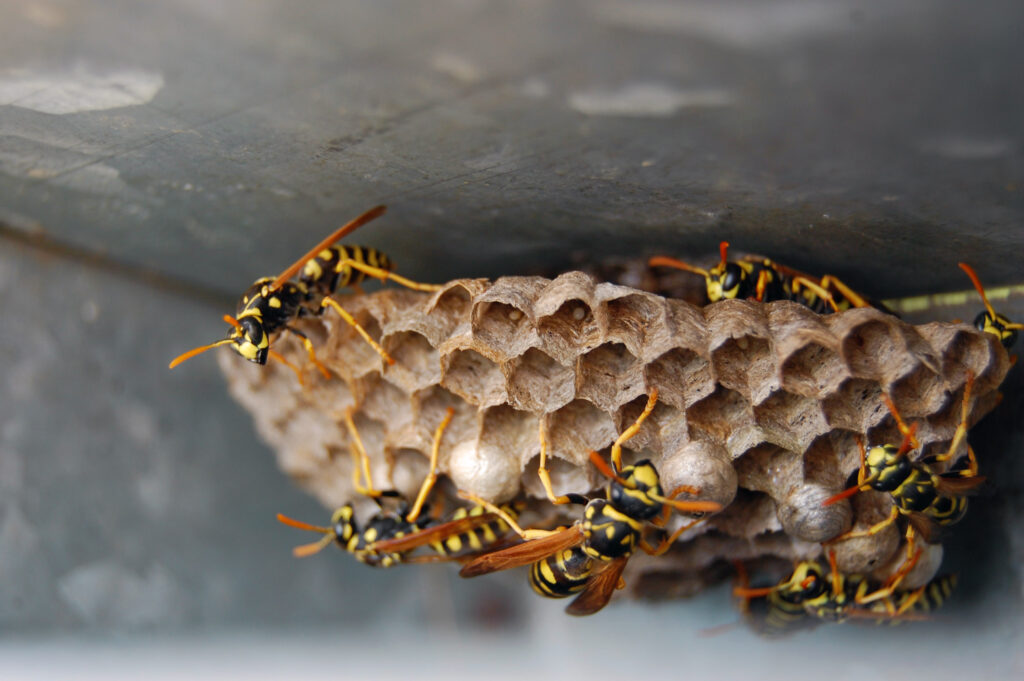Home » Some Differences Between Bees and Wasps
Some Differences Between Bees and Wasps
This summer, you may have noticed some new unwanted neighbors building their home on your property, buzzing around your garden with their stingers at the ready. But, how do you tell if these new arrivals are bees or wasps? Since treatment varies significantly between the two, it’s important to know what you’re dealing with to protect both your family and your home.
Let’s take a closer look at these stinging squatters to determine if you’re dealing with bees or wasps.
Bees
- There are several different types of bees, including bumble bees, carpenter bees, and honey bees, each with distinct behaviors.
- Most bees, such as bumble bees and honey bees, are covered in dense hairs. These hairs not only give them a fuzzy appearance but are crucial for pollen collection.
- Bees are generally social insects, forming large colonies that can range from a few hundred to tens of thousands of members. These colonies work together to build hives and support their queen.
- In general, bees are much rounder and stockier than wasps, giving them a less aggressive look.
- The majority of bees are herbivores, feeding primarily on pollen and nectar from flowers, which they also use to create honey—a vital food source for the colony.
- Their hives are made from wax, often around tree branches or hollows.
Wasps
- While there are multiple types of wasps as well, they typically have less hair and have a shiny appearance, giving them a sleek and more intimidating appearance.
- Compared to bees, wasps have more streamlined bodies and longer legs with their characteristic “wasp waist”, a constriction between the thorax and abdomen making for skinny waists and pointed lower abdomens.
- Wasps can be either social or solitary. Social wasps live in communities of dozens up to thousands of members depending on the size of the nest.
- Wasps are primarily predators, feeding on insects for the majority of the year and turning to scavenging sweets in late summer and early fall.
- Wasp nests are typically constructed from a paper-like material made by chewing wood fibers mixed with saliva. These nests are often seen hanging from tree branches, eaves, or attached to structures. Mud daubers, a type of wasp, create their nests from mud, while other species may even nest underground.

Call Angel Pest Control
While these general characteristics help distinguish between bees and wasps, some exceptions might blur the lines. For example, carpenter bees are not social and might be mistaken for wasps due to their appearance—their smooth, shiny abdomen can resemble a wasp’s, but their overall round shape and nesting habits align more with bees.
If you are still struggling with determining which of these insects have moved in, don’t hesitate to turn to the experts! Angel Pest Control has years of experience with identifying and treating pests such as these. We offer one time services as well as a seasonal monthly service for wasp control. For further information, give us a call and we can help determine which service is right for you!






